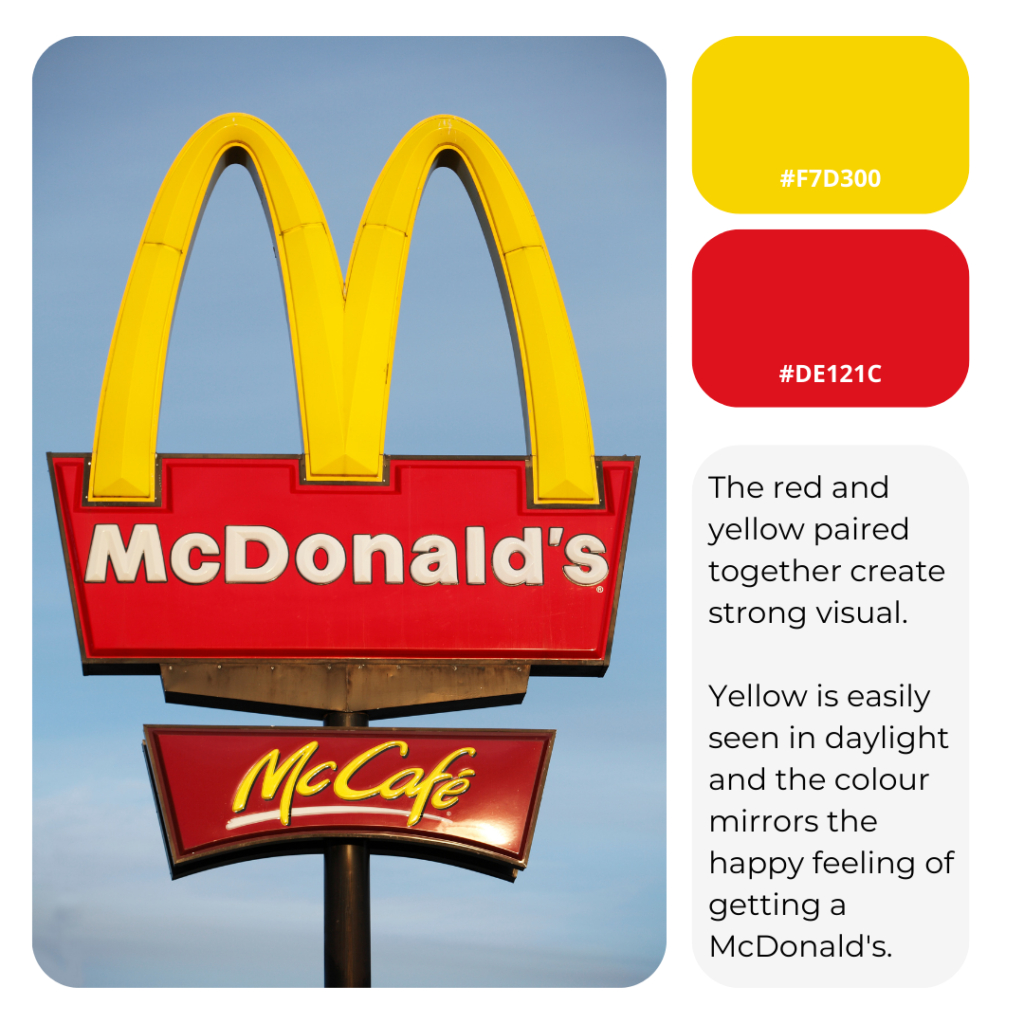Have you ever wondered why some colours can make you feel happy and others make you feel sad?
This is because of Colour Psychology and the connotations that we associate with each colour. Colour Psychology is the study of how different hues can affect our emotions, moods, and behaviours. It’s been used for centuries in art, design, marketing, and branding – and it’s still relevant today.

By understanding how to use colour in your branding, you can create an emotional response in your customers that will change the way they perceive your business, and ultimately influence their buying decisions. This goes hand in hand with user personas and being able to target your audience using colour to affect their behaviour. We’ve compiled all the information you need to know about Colour Psychology into one easy-to-read guide.
Table of Contents
How does Colour Psychology work in Design and Marketing?
Designers and marketers often use Colour Psychology in their work to create desired effects.
It’s important to be aware of the effects that different colours can have, as they can be used to influence our thoughts and behaviours in both subtle and not-so-subtle ways. This could be by using an encouraging colour for Call to Actions or hints of colour throughout a website to gently lead you to purchase a product.
By understanding how Colour Psychology works, we can make more informed decisions about the colours we choose to use in our designs and marketing campaigns.
It’s important to note that not everyone will react in the same way to different colours – what might be seen as a calming colour by one person may appear dull or uninspiring to someone else.

The meaning of colours:
Blue Colour Psychology
The colour blue is often associated with feelings of calmness and serenity. It’s seen as a peaceful, tranquil, or secure colour depending on the viewer–a sign that stability exists in this space too. Businesses that want to project an image of security will rely heavily upon using blues when designing their advertisements because it suggests safety.

Yellow Colour Psychology
Yellow is the colour of reason and intellect and has been historically linked with happiness and optimism. Yellow can improve analytical thinking because its associated traits are brightness (to stimulate attention) as well as logic-based understanding.

Red Colour Psychology
Red has always been a powerful, attention-grabbing presence in design. It’s associated with strong emotions such as love and hate but also signifies strength, power, and danger. Red is an intense shade, so should be used sparingly as to not overbear a design.

Orange Colour Psychology
Orange is a warm and sunny colour that fills a space with an inviting glow. The energy of oranges can invigorate those who are tired and re-energize them. With its cheering nature, orange will inspire you and is a great colour choice for a Call to Action button.

Green Colour Psychology
The colour green is famously associated with nature and money. It symbolises growth, fertility, healthiness as well generosity among other positive traits which makes it a great choice for any business looking to stand out from its competitors! Less vibrant greens are also known to create a similar energy to a blue tone, oozing serenity and calmness.

Purple Colour Psychology
Purple is a fascinating colour that hails from the depths of royalty and magic. It’s an in-between, somewhere between blue’s serenity and red passion–a perfect balance for when you want to feel rested yet energised.

Pink Colour Psychology
Pink is a colour that has been associated with femininity and love for centuries, making it an obvious choice for those in the beauty industry. The association between fertility and motherhood is what makes it such a calming colour.

Why is colour psychology important in design?
When designing anything- a website, an email campaign, or even just your business cards- you need to carefully consider the psychological effects that your colour palette may emanate. Colour is incredibly powerful and can be used to influence emotions positively or negatively.
Resources
Some great resources that can help you get started are Kuler, Color codes.io and HTML Color Codes.
If you would like help choosing colours that will work best for your brand, get in touch with our team today. We would be happy to assist you!




